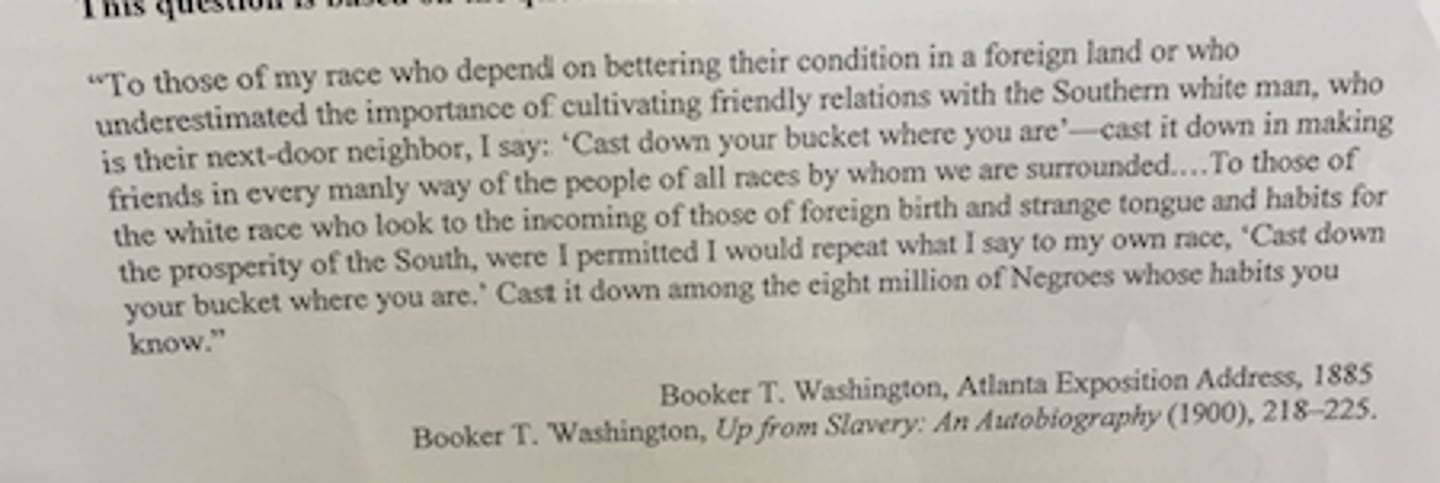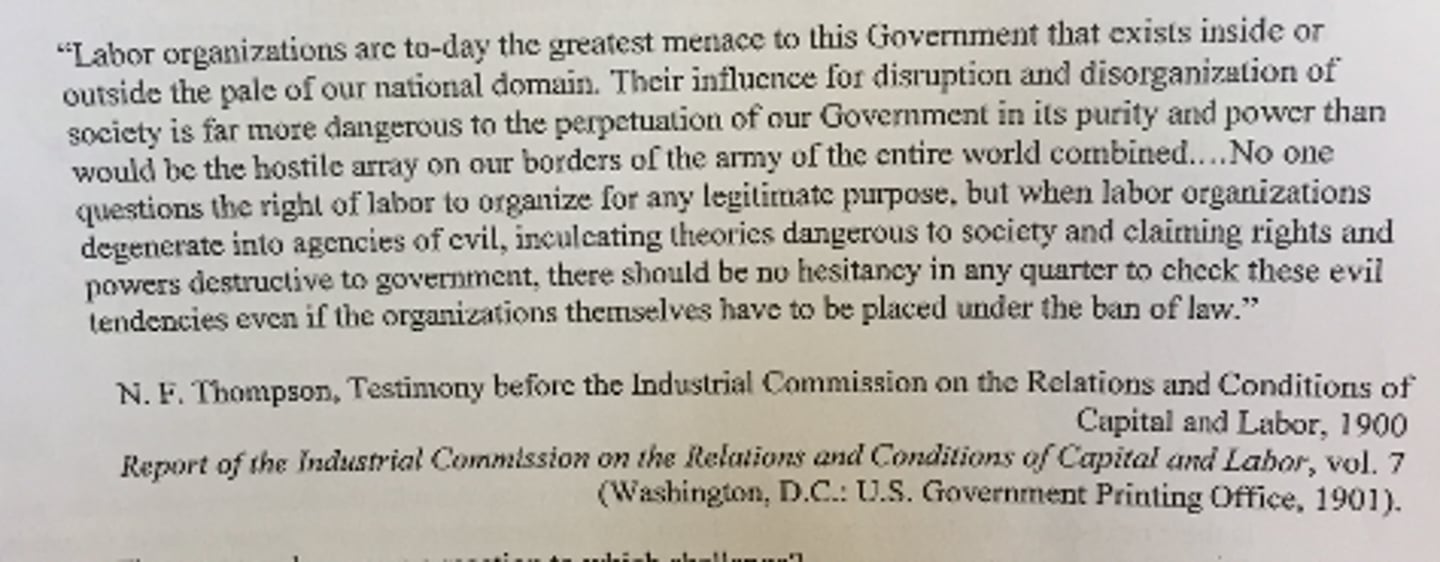AP US History Semester 1 Final Ch. 18-20
1/44
There's no tags or description
Looks like no tags are added yet.
Name | Mastery | Learn | Test | Matching | Spaced |
|---|
No study sessions yet.
45 Terms
Plessy v. Ferguson (1896)
Which of these late-nineteenth century U.S. Supreme Court rulings settled the question of African Americans' access to regular first-class seats on American railroad cars until the 1950s?
The YMCA prompted "muscular Christianity" for while-collar workers.
The growth of the YMCA in late-nineteenth-century American cities resulted from which of the following factors?
adjust to the demands of the industrial clock.
By the early 1900s, many business leaders encouraged their male workers to participate in sports to
The game was a wholesome way to promote discipline and teamwork.
Which of the following was a reason American businesses embraced baseball in the late nineteenth century?
College football.
Which sport was the most controversial in the late 1800s?
He promoted industrial education for blacks as a strategy for lessening white prejudice.
Which of the following statements summarizes Booker T. Washington's approach to racial change in the United States?
Prohibition Party
In 1880s, the Women's Christian Temperance Movement (WCTU) controversially threw its support behind the
West
Which region of the United States had responded to the women's voting rights movement by 1900?
Animals and plants adapt to better suit their environment through natural selection.
Which of the following statements describes Charles Darwin's theories as presented in his book, On the Origin of Species?
Trolley car
By 1900, which of the following was the primary means of urban mass transit in the United States
The development of steel girders, plate glass, and elevators.
Which of the following made the growth of skyscrapers possible?
Chicago
The first skyscraper in the United States was built in 1885 in which city?
Electric light
Which of these inventions made residents feel safer in urban areas in the late nineteenth century?
Buildings that housed many families in cramped, airless apartments
Which of the following describes the tenements that were typical of many urban areas in the early twentieth century?
Yellow Journalism
William Randolph Hearst's and Joseph Pulitzer's sensationalist style of reporting was known as which of the following?
Lincoln- Steffens-the corruption of America's urban governments
Which of the following muckrakers is correctly matched with his or her reform area?
Urban
Which level of government generally saw the most corruption in the late 1800s?
Attempts to build more and better urban park spaces, including playgrounds and gardens.
The City Beautiful movement is associated with which of the following activities?
Social Work
The settlement houses that emerged in early twentieth-century cities established which new occupational field?
A public uproar caused by Upton Sinclair's realist novel The Jungle
What spurred the U.S. Congress to pass the Pure Food and Drug Act 1906?
were mostly middle-class urban reformers
In general, progressives differed from labor and farm advocates because the progressives
created the Civil Service Commission, which filled some government jobs by examination.
The Pendelton Act of 1883
Sherman Antitrust Act
Which of the following was the first federal law ever passed to regulate trusts?
Their leader Jacob Coxey was arrested and their demands were not met.
How did the federal governement respond when jobless men marched on Washington in 1894?
The economic depression of the 1890s.
Which of the following explains the inability of the Populists to become a major national political party alongside the Republicans and the Democrats in the late 1890s?
encourage borrowing and stimulate industry.
Advocates of free silver believed it would
The United States should abandon the gold standard to stimulate industry.
What did William Jennings Bryan mean he stated, "You shall not crucify mankind on a cross of gold" in his famous 1896 speech?
the direct election of U.S. senators
New laws that restricted African Americans' and northern immigrants' acces to the vote helped to ensure the passage of
nationalize the coal companies.
To bring big coal companies to the negotiating table during the 1902 coal strike, President Theodore Roosevelt threatened to
ordered the Northern Securities Company railroad trust dissolved.
In a landmark decision regarding the Northern Securities Company railroad trust dissolved.
Implemented his Square Deal by stepping up his attacks on American trusts.
After Roosevelt won the presidency in his own right in 1904, he did which of the following?
The monopoly was broken up into several competing companies.
What was the outcome of the Supreme Court's decision in the 1911 Standard Oil case?
He was a conservationist who tried to balance commercial and public interests.
Which of the following statements characteristics President Theodore Roosevelt's approach to the nation's natural resources?
to record the brutal conditions in mines and mills where children worked.
Why did the National Child Labor Committee, founded in 1907, hire photographer Lewis Hine?
provided insurance for on-the-job accidents.
Between 1910 and 1917, all the industrial states enacted laws that
equal opportunity for African Americans.
Organized in 1905, the Niagara Movement embraced
NAACP
Mary White Ovington and W.E.B. Du Bois were both founders of the
Wilson won with a minority of the popular vote because Taft and Roosevelt split the Republican vote.
What was the outcome of the 1912 presidential election?
Newlands Reclamation Act
Which of the following Progressive reforms amended the Sherman Act to prevent trusts from curbing competition?
Progressives drew the blueprint for the powerful American state suited to an industrial era.
What was the lasting legacy of the Progressive movement in America?
convince blacks to make the best of their prescribed place in society.
The speech above attempts to

the Supreme Court.
A decade after the speech above, segregation policies were reinforced by
opportunities in the "New South"
The author of the quote above was most likely motivated by the
Big businesses and their governement allies' inability to create a unified industrial nation.
The passage above was a reaction to which challenge?

challenged the dominant corporate ethic in the United States.
Critics of the arguments expressed in the excerpt above